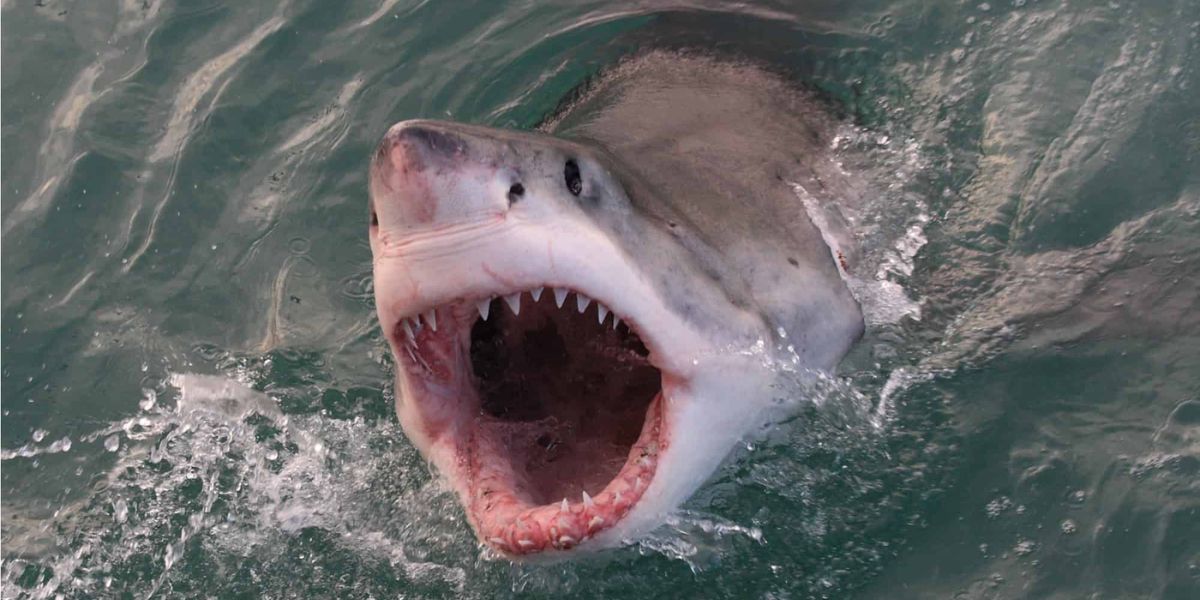Sharks prefer the state because of its warm seas and growing human population, particularly during the busiest travel months when more people are in the water.
But it’s crucial to keep in mind that shark attacks are still uncommon and that instances can be greatly decreased by taking safety measures like swimming in groups and avoiding swimming at dawn or nightfall.
These are North Carolina’s top six shark-infested beaches.
Emerald Isle
Emerald Isle Beach, located on the Crystal Coast of North Carolina, is one of the world’s most shark-infested beaches.
One of the main shark migration routes passes through the nearby coastal waters, forming what is known as a “shark superhighway.”
The area is a hotspot for shark activity because different shark species, such as the powerful great white, hammerhead, and blacktip sharks, visit this corridor.
Banned Pets: These are the Animals You Can’t Legally Own in South Carolina
Their behavior is driven by their heightened sensitivity to prey in the low light of dusk. Shark attacks usually occur during these periods because humans are often in the water simultaneously and are unaware of the animals around.
Since 2000, shark attacks have increased in frequency in the region. A man was attacked by a shark that year and almost lost his hand. Several such cases, including attacks in 2002, 2008, 2016, and 2020, were reported after this.
Wrightsville Beach
Shark-related occurrences have occasionally occurred at Wrightsville Beach. A small youngster was standing in shallow water in 2021 when he got bitten on the right calf.
Another instance of a shark biting a little boy while he was swimming happened in 2019. This incident led to a higher increase of shark attacks in North Carolina that month.
Warning: The 5 Most Shark-Infested Beaches in Florida You Should Avoid!
Though concerning, these sightings inform the public that most shark encounters end in non-life-threatening injuries, particularly in places with clear, shallow water, and that sharks are more likely to target smaller aquatic prey.
Due to its popularity for swimming, surfing, and fishing, it is still a common area for sharks and humans to come into contact, with only a few near, frightening encounters.
Kitty Hawk Beach
Because great white sharks and other species are regularly spotted through monitoring and seasonal migrations, shark sightings are rather common around Kitty Hawk and the larger Outer Banks area.
Nine great white sharks were spotted close to the Outer Banks in only the last month, according to OCEARCH.
As the sharks go through the area in search of food, this evidence highlights how crucial the location is to their migratory habits.
Since the 1930s, the Outer Banks has seen ten shark attacks: two in Currituck County and eight in Dare County, the location of Kitty Hawk.
Ocracoke Island
Shark attacks and sightings have been frequent on Ocracoke Island, a seaside hamlet in the picturesque Outer Banks region.
A girl was attacked by a shark on her foot and lower leg in 2011. The incident acted as a warning that dangers can exist in even shallow seas.
A more severe attack happened in 2015 when an elderly man was attacked while swimming informally.
He was bitten several times, from his wrists to his hip, leg, and body. The most recent occurrence was in 2024, when a shark bit a woman at the lifeguard beach in Ocracoke, injuring her foot many times.
Both tourists and residents should understand the need of taking prompt, informed action in the case of an encounter and the necessity of people being mindful of possible shark activity, especially when lifeguards are present and beach areas are strictly regulated.
Holden Beach
Sadly, coastal communities like Holden Beach have to constantly be on the alert for shark sightings. There have been six recorded shark attacks at the beach between 1853 and 2015, which is a moderate number of shark attacks.
This species has been sighted four times, in 2005, 2009, 2011, and 2013. An elderly woman was strolling through the lake in 2013 when her right foot was bitten.
However, because of the calm, relatively shallow seas where their prey can be found, sharks have been known to visit the Holden Beach shoreline.
Even though there have been sporadic reports of shark sightings and bites close to Holden Beach, the overall chance of an attack is still minimal.
Final Thoughts
Although North Carolina has some of the nation’s most shark-infested beaches, it’s important to understand that shark attacks shouldn’t stop prospective tourists from taking in the stunning coastline.
The state’s coastal waters, which are rich in marine life and a major shark migration route, are where sharks gather. Bite attacks are typically isolated instances in areas with high human activity concentrations.







Leave a Comment